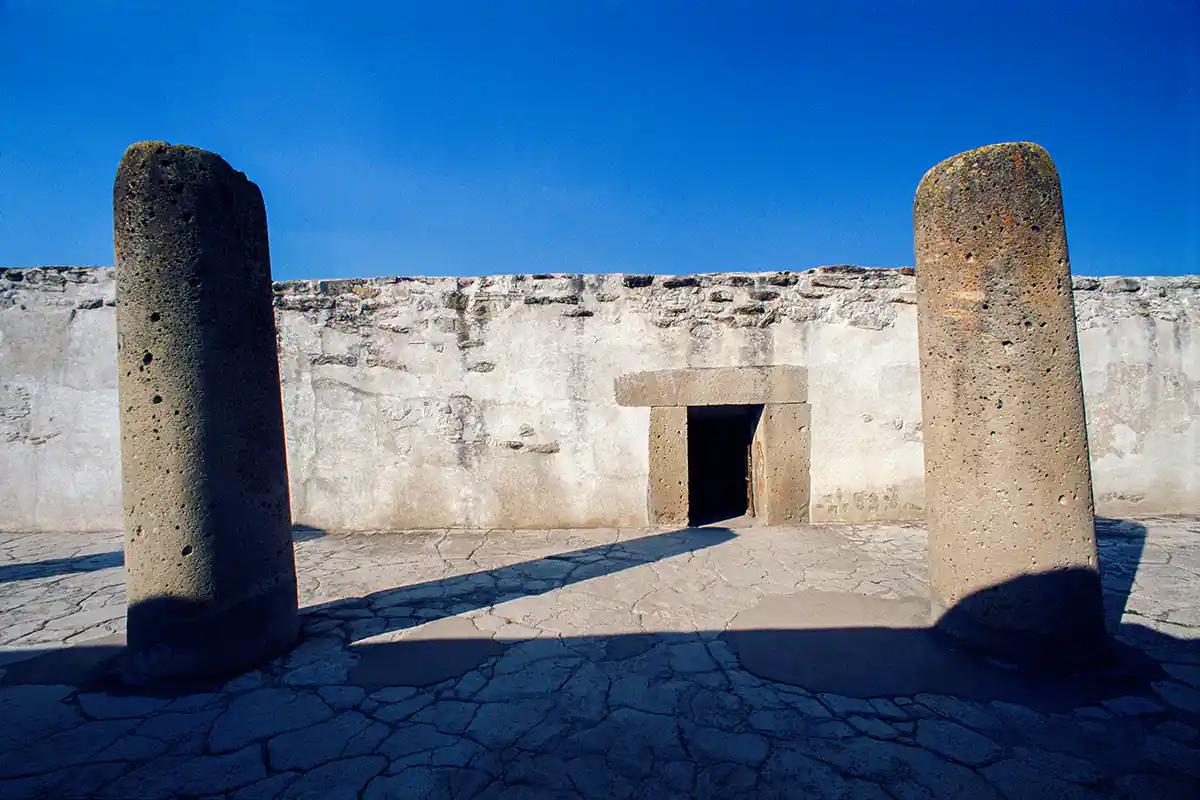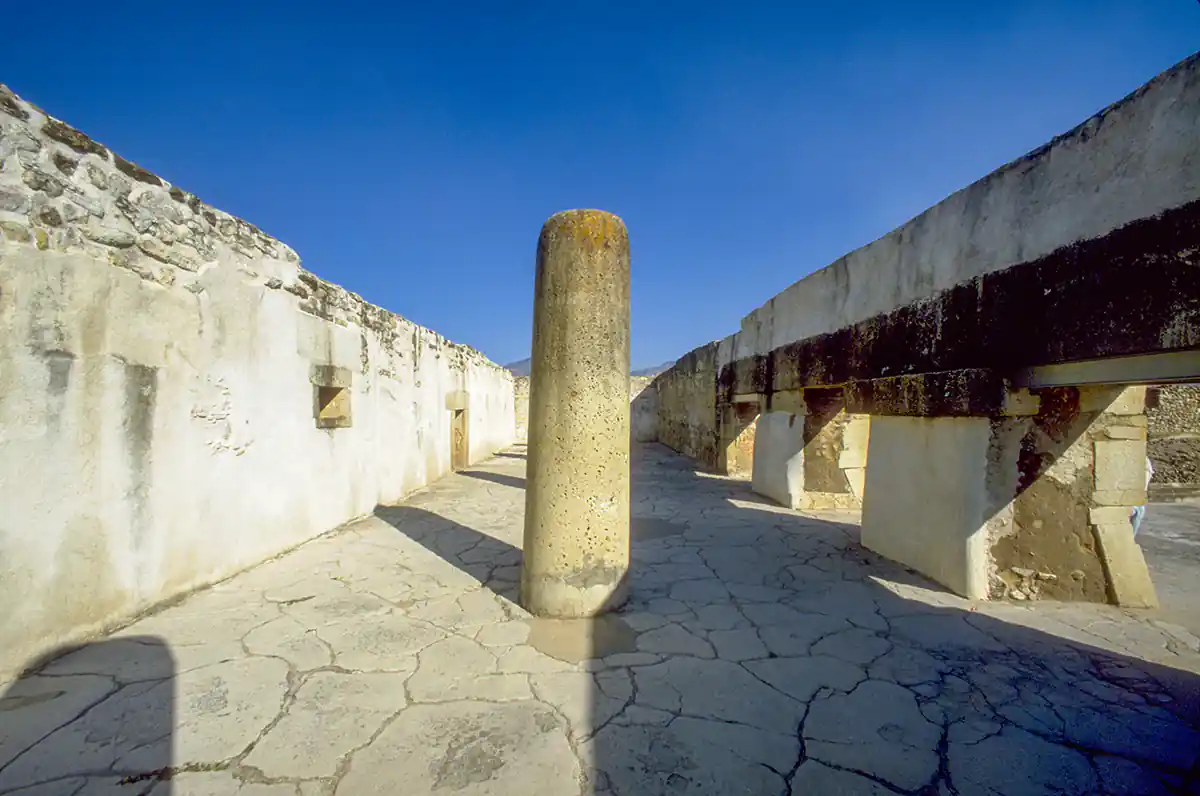Mitla
Situated at an elevation of 4,855 feet (1,480 meters) and 24 miles (38 k) from the large city of Oaxaca, the ruins of Mitla are one of Mexico's most fascinating and enigmatic sacred places. Archaeological excavations indicate that the site was occupied as early as 900 BC. Mitla's visible structural remains, however, date from between 200 and 900 AD, when the Zapotecs were present, from 1000 AD, when the Mixtecs took control of the site, and from 1200 AD (some sources say 1500), when the Zapotecs were back in control. Mitla is a term from the Nahuatl language meaning 'Place of the Dead,' and the earlier Zapotec name of Lyobaa means 'tomb' or 'place of rest.' These two names and the archaeological excavators' findings indicate that the village was of great importance as a burial place during both the Zapotec and Mixtec times.
The archaeological zone of Mitla included five main groups of structures, and by the beginning of the Christian era, the town had stretched for more than two-thirds of a mile along either side of the Mitla River. The photograph shows part of the 'Hall of Columns' and the entrance to the main sanctuary. We do not know what their builders called these structures; the name 'Hall of Columns' comes from the first Spanish explorers who visited the site. The Hall of Columns, 120 by 21 feet in size, has six monolithic columns of volcanic stone that initially supported a roof covering the entire hall. The darkened doorway leads through a low and narrow passageway to the interior of another enclosure, which is now roofless but also covered in ancient times. This chamber is one of the most astonishing artistic artifacts of pre-Columbian America. Its walls are covered with panels of inlaid cut-stone mosaic, known as a stepped-fret design. These intricate geometric mosaics' motif is believed to be a stylized representation of the Sky Serpent and, therefore, a symbol of the pan-regional Mesoamerican deity, Quetzalcoatl.
Archaeologists are mystified regarding the use of this chamber. An early Spanish explorer named Canseco, who visited Mitla in 1580, wrote of the Hall of Columns, "In this building, they had their idols, and it was where they assembled for religious purposes, to make sacrifices to their idols, and to perform heathen rites." Regarding the interior chamber, Canseco says it was the residence of the high priest who was "like our pope." The oldest bit of information we have about the chamber, however, and possibly the most revealing, is a legend that says the chamber was used for the final initiation of shamans trained in magic and healing in the school of Mitla.
In the 'Patio of Tombs', adjacent to the Hall of Columns, is a 2.8-meter tall column known as the 'Pillar of Death.' Legend says that if a person holds their arms around this pillar and feels it move, then their death is imminent. Nearby to Mitla, along the road to Oaxaca, is the town of Santa Maria del Tule, with its famous Arbol del Tule (tree of Tule) in the churchyard. This mighty tree, having a circumference of over 160 feet at its base, is between 2000 and 3000 years old, making it one of the oldest living things on earth.

Martin Gray is a cultural anthropologist, writer and photographer specializing in the study of pilgrimage traditions and sacred sites around the world. During a 40 year period he has visited more than 2000 pilgrimage places in 160 countries. The World Pilgrimage Guide at sacredsites.com is the most comprehensive source of information on this subject.


